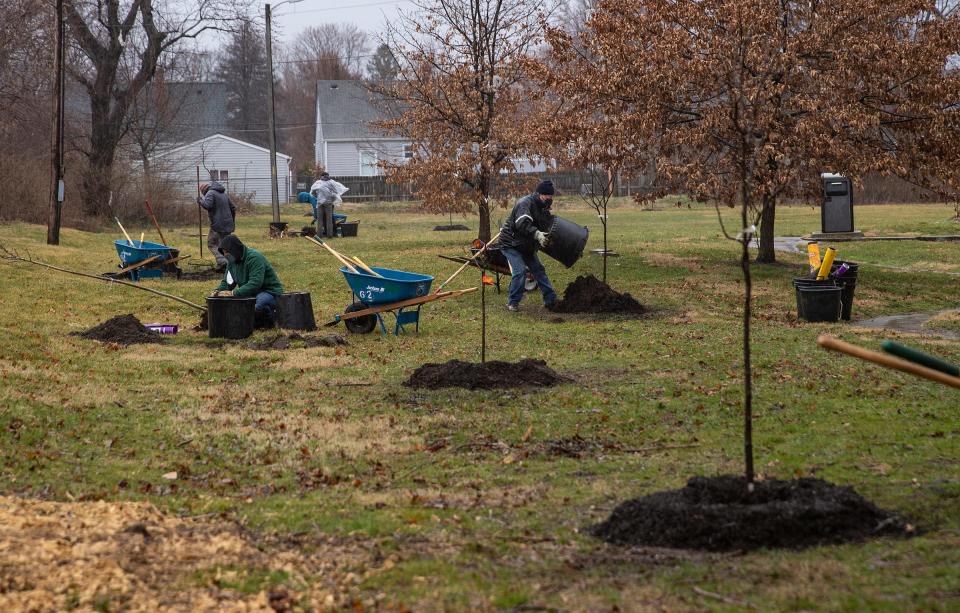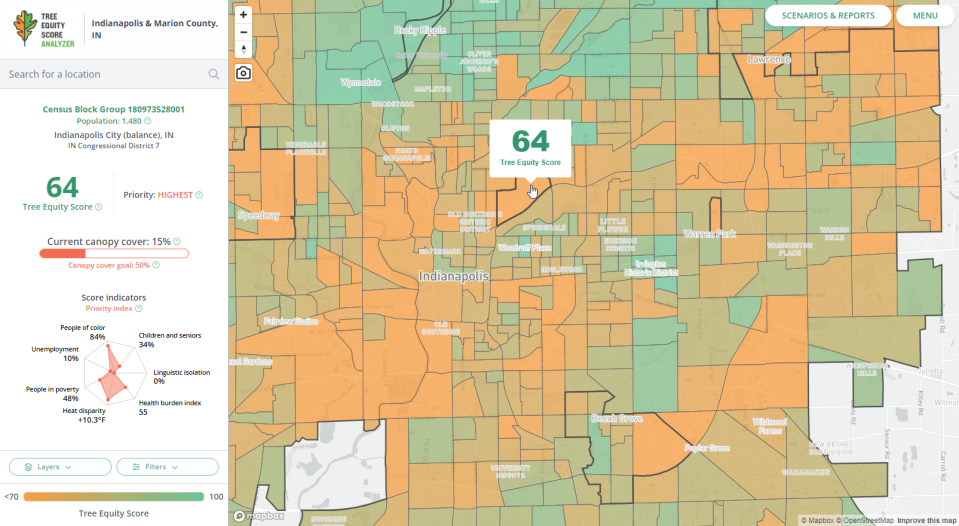A new mapping system will assist Marion County in prioritizing where to plant more trees to help build climate resilience and alleviate flooding, heat illness and air pollution ― especially in overlooked neighborhoods.
American Forests, a non-profit conservation organization, partnered with Keep Indianapolis Beautiful to build the free-to-use mapping program Tree Equity Score Analyzer to help identify areas lacking tree canopies and prioritize planting.
Planting more trees can provide benefits that help not only with rising temperatures, but capturing and containing storm water to help with flooding, and help clean the air.
Joshua Simon, with American Forests, said the tool considers the environmental benefits and socioeconomic indicators to help decide the most important places to plant trees. The TESA can focus attention on areas lacking tree canopies and resources to help streamline planting efforts.
There’s a big push generally to increase urban tree canopies generally, but climate change does not affect all communities the same, Simon said.
“Communities of color and low-income communities oftentimes are at the forefront in the brunt of the results of climate change,” Simon said. “And so one of the factors we found that kind of helps combat climate change is planting trees.”

Partnering with local experts
To help implement the tool on the ground in Indy, American Forests reached out to Keep Indianapolis Beautiful to help convene community input and engagement.
Carly Weidman, vice president of stakeholder engagement at KIB, said Keep Indianapolis Beautiful is the primary contractor for planting trees in the city and typically plants about 3,000 trees each year.
TESA will allow KIB to raise awareness and allow people to engage in informed conversations around tree equity.
“We were very excited to jump on board and be a part of this process,” Weidman said. “And it’s already been a helpful tool for us to use internally but also start some of those conversations citywide and with community members.”


Why are trees important in Indy?
Indianapolis has already experienced record-breaking heat this year, and 2023 was the warmest year globally according to NOAA’s 174-year climate record.
Stephanie Freeman-Day, at Indiana University’s Environmental Resilience Institute, said climate change impacts like record heat and poor air quality are increasing in urban areas and those effects are exacerbated by a lack of trees.
“Quite frequently, tree canopy is not equitably distributed in urban areas, and it tends to be that wealthier areas have more dense tree canopies than areas where there are people of lower income or larger amounts of people of color,” Freeman-Day said.
The TESA tool is “super useful” for a community in the process of planning tree plantings, Freeman-Day said.
Find the tool here: treeequityscore.org/analyzer/indianapolis
Karl Schneider is an IndyStar environment reporter. You can reach him at [email protected]. Follow him on Twitter @karlstartswithk
IndyStar’s environmental reporting project is made possible through the generous support of the nonprofit Nina Mason Pulliam Charitable Trust.
This article originally appeared on Indianapolis Star: Planting trees in Indy: New tool helps find areas in need
Source Agencies



